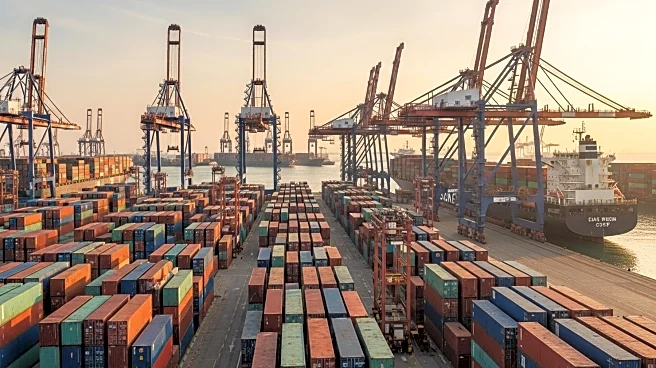What's Happening?
The Indian agriculture sector is expressing optimism following the restructuring of the Goods and Services Tax (GST) in India. The Indian Rice Exporters Federation (IREF) has highlighted that the reform is expected to significantly benefit farmers by increasing demand for premium rice varieties. The GST reform includes substantial cuts in tax rates for consumer items, which is anticipated to boost demand for high-value rice such as basmati. Additionally, the reform has streamlined the GST registration process, reducing approval time to three days, and introduced a fast-track refund system for exporters, providing 90% provisional GST refunds within a week. These changes are expected to enhance liquidity and competitiveness among exporters, particularly benefiting micro, small, and medium enterprises (MSMEs) by reducing compliance burdens and costs.
Why It's Important?
The GST reforms are poised to have a substantial impact on the Indian economy, particularly in the agriculture sector. By lowering tax rates and simplifying compliance, the reforms aim to stimulate consumer demand and economic growth. This is crucial for farmers and exporters who stand to gain from increased demand and improved cash flow due to faster GST refunds. The reforms are also expected to strengthen the manufacturing sector and make Indian exports more competitive globally. For MSMEs, which are vital to the economy, the reduced compliance burden and costs could lead to increased business growth and job creation, contributing to sustainable development across the country.
What's Next?
As the GST reforms take effect, stakeholders in the agriculture and export sectors will likely monitor the impact on demand and business operations closely. The government may continue to assess the effectiveness of these reforms and make further adjustments to enhance economic efficiency and growth. Businesses, particularly MSMEs, may need to adapt to the new compliance requirements and leverage the benefits of the reforms to expand their operations. The broader economic implications of these changes will be observed in the coming months as consumer demand and export competitiveness evolve.













